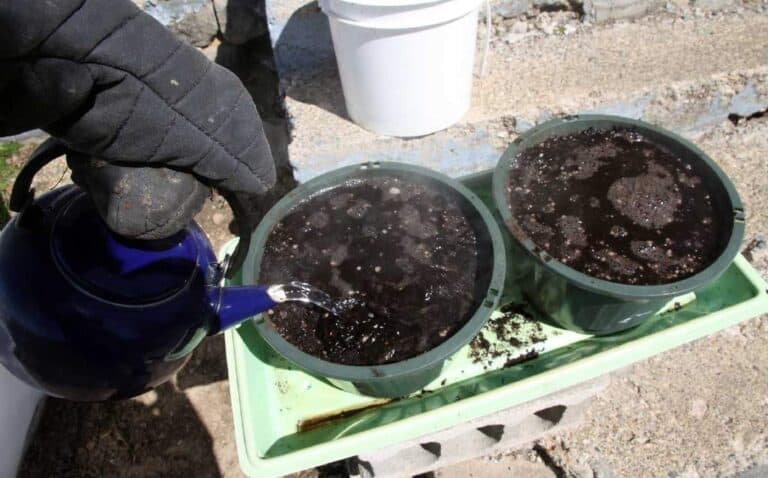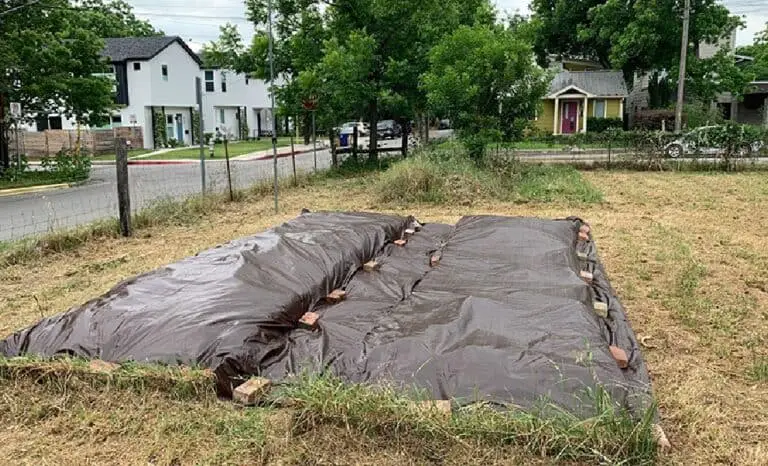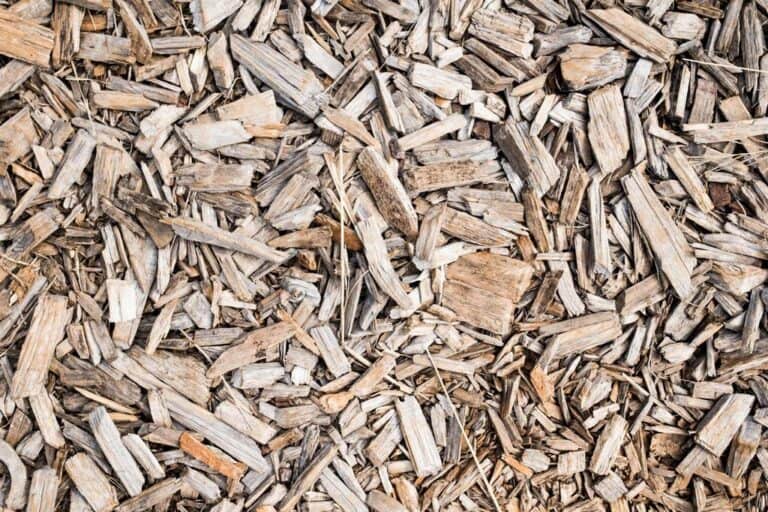Topsoil or Compost for Vegetable Garden: Which One is Better?
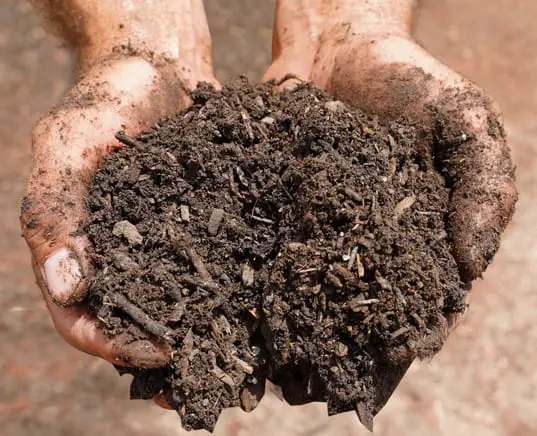
Gardening enthusiasts know that achieving a thriving vegetable garden requires more than just seeds, sun, and water. The foundation of successful vegetable cultivation lies beneath the surface, in the soil. But when it comes to improving your garden soil, should you choose topsoil or compost?
In this comprehensive guide, we’ll explore the characteristics, benefits, and application techniques of both topsoil and compost, helping you make an informed decision for your vegetable garden.
Understanding the Importance of Soil Amendment
Before we embark on the debate between topsoil and compost for vegetable gardening, it’s crucial to comprehend why soil amendment holds such significance in the world of horticulture.
Soil Quality and Plant Growth
The quality of your garden soil is akin to the foundation of a building—it profoundly influences the success of your vegetable crops. Picture it as the nurturing bed where your plants establish their roots and flourish.
Rich, nutrient-laden soil creates the perfect environment for vigorous growth and bountiful yields. In contrast, poor-quality soil can stunt root development, impede nutrient absorption, and lead to underwhelming or unhealthy plant growth.
Nutrient Availability
One of the primary reasons for soil amendment is to ensure an ample supply of essential nutrients to your vegetable plants. A well-amended soil serves as a nutrient reservoir, providing the building blocks of growth—nitrogen, phosphorus, potassium, and various micronutrients. When these nutrients are readily available, your plants have everything they need to thrive, from sturdy stems to vibrant leaves and a plentiful harvest.
Moisture Retention and Drainage
Amending your soil doesn’t just enrich it with nutrients; it also influences its water-holding capacity. Properly amended soil strikes a balance, retaining moisture while allowing excess water to drain away. This equilibrium ensures that your plants receive consistent hydration without becoming waterlogged, preventing issues like root rot and promoting healthy, resilient growth.
Now, let’s delve into the characteristics and benefits of topsoil, a popular choice for enhancing garden soil.
Topsoil: Characteristics and Benefits
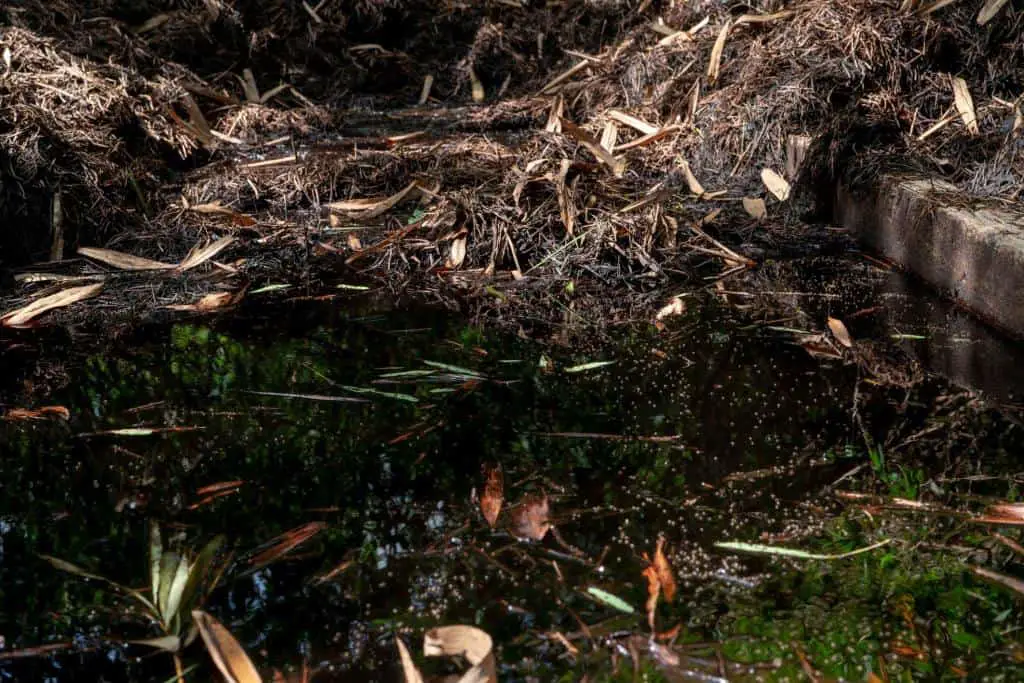
Topsoil is the uppermost layer of soil found on the Earth’s surface, typically ranging from 2 to 8 inches deep. It’s rich in organic matter and minerals and serves as the primary zone for plant root development. Topsoil contains a balanced blend of sand, silt, and clay particles, making it ideal for gardening.
Advantages of Using Topsoil
- Enhanced Soil Structure: One of the key benefits of using topsoil is its ability to improve soil structure. It provides a stable foundation for plant roots to grow and spread, ensuring optimal nutrient and water absorption.
- Improved Drainage: Topsoil helps prevent waterlogging in your garden beds. It allows excess water to drain away, preventing root rot and other water-related issues.
- Nutrient-Rich: Topsoil often contains essential nutrients for plant growth, such as nitrogen, phosphorus, and potassium. This can reduce the need for additional fertilizers.
Now that we’ve explored the merits of topsoil, let’s turn our attention to compost, another valuable soil amendment option.
Compost: Composition and Advantages
Compost is a dark, crumbly substance that results from the decomposition of organic matter. This organic matter can include kitchen scraps, yard waste, and other biodegradable materials. As it breaks down, compost becomes a nutrient-rich humus that’s a boon for your garden.
Benefits of Incorporating Compost
- Nutrient Enrichment: Compost is teeming with essential nutrients like nitrogen, phosphorus, and potassium. When added to your garden soil, it enhances its fertility and provides a steady supply of nutrients to your plants.
- Improved Soil Structure: Compost acts as a natural soil conditioner, enhancing soil structure by increasing its porosity and aeration. This creates an environment conducive to root growth.
- Microbial Life: Compost is alive with beneficial microorganisms. These microbes help break down organic matter further, making nutrients more accessible to your plants’ roots.
Now that we have an understanding of topsoil and compost, let’s move on to evaluating your garden’s specific soil needs.
Assessing Your Garden’s Soil Needs
Before deciding whether to use topsoil or compost (or both), it’s essential to assess your garden’s existing soil quality. There are a few methods you can use to do this:
- Soil Test Kits: Soil test kits are readily available and offer a quick way to check your soil’s pH, nutrient levels, and texture. They provide valuable insights into your soil’s current condition.
- Professional Soil Testing: For a more comprehensive analysis, consider sending a soil sample to a professional lab. They can provide detailed information on nutrient content, pH, and any contaminants present.
Several factors should influence your decision when choosing between topsoil and compost:
- Current Soil Quality: Consider the results of your soil tests. Is your soil lacking essential nutrients, or is its structure poor? Understanding your soil’s deficiencies will guide your choice.
- Budget: Topsoil and compost can have different costs, so evaluate your budget for amending the soil.
- Garden Goals: What are your gardening goals? Are you looking for a one-time soil improvement, or do you want to maintain soil quality over the long term?
Now that you’ve assessed your garden’s needs and have soil test results in hand, let’s explore the practical aspects of applying topsoil and compost.
Topsoil or Compost for a Vegetable Garden: Which One is Better?
Both topsoil and compost have their benefits when it comes to vegetable gardening. Topsoil can provide a stable base for plants to grow in and can help improve drainage, while compost is a rich source of nutrients and organic matter that can improve soil fertility and texture.
For best results, it’s recommended to use a combination of both topsoil and compost in a vegetable garden. Use topsoil as a base layer and add compost on top to provide a nutrient-rich growing medium for your plants.
When to Choose Topsoil
- Establishing New Garden Beds: If you’re creating new garden beds or need to level the ground, topsoil is an excellent choice for raised beds. It provides a stable base for your plants to grow and establishes a foundation for future soil improvement with compost.
- Improving Drainage: In areas where drainage is a concern, such as clay-heavy soils that tend to become waterlogged, topsoil can help improve drainage while still providing essential nutrients.
- Filling Raised Beds: If you’re filling raised beds or containers, using topsoil as a base layer can provide the necessary structure for root growth.
When to Choose Compost
- Soil Enrichment: If your existing garden soil lacks organic matter or has become depleted of nutrients, compost is the perfect solution. It improves soil fertility and enhances its overall health.
- Established Gardens: For well-established gardens that have already been enriched with topsoil, adding compost annually can maintain and enhance soil quality.
- Sustainability: If you’re environmentally conscious and want to reduce waste, composting is a sustainable way to recycle kitchen and garden scraps while benefiting your garden.
Also Read: Can Cucumbers Benefit from Mushroom Compost?
Using Both: A Winning Combination
In many cases, the best choice for your vegetable garden may not be an either-or decision. In fact, using a combination of topsoil and compost can yield exceptional results. Here’s how you can make the most of both:
- Layering: Begin with a layer of topsoil to provide a solid foundation. Then, add a generous layer of compost on top. This allows your plants to access immediate nutrients while benefiting from the long-term improvements of compost.
- Amendments: Incorporate compost into your topsoil to create a nutrient-rich blend. This can be particularly effective for raised beds or areas with poor soil quality.
- Crop Rotation: Consider using compost in the offseason to replenish the soil while rotating crops. Different vegetables have varying
Combining Topsoil and Compost for Optimal Results
In the topsoil vs. compost debate, an effective strategy is to use a blend of both. Combining topsoil and compost can provide several advantages for your vegetable garden. Here’s why this blend can work wonders:
Advantages of Using a Blend
- Balanced Soil Texture: Topsoil typically contains a mix of sand, silt, and clay, contributing to well-balanced soil texture. Combining it with compost enhances the soil’s nutrient content and organic matter.
- Improved Soil Structure: The blend of topsoil and compost promotes optimal soil structure, offering the right balance between drainage and moisture retention. This benefits root development and overall plant health.
- Enhanced Nutrient Availability: Compost enriches the blend with essential nutrients, while topsoil provides a stable growing medium. This combination ensures that plants have access to both immediate and long-term nutrient sources.
Guidelines for Mixing Effectively
To achieve the best results when combining topsoil and compost, follow these guidelines:
- Measure Proportions: Determine the ratio of topsoil to compost based on your soil test results and your garden’s specific needs. Common ratios include 1:1, 2:1 (topsoil to compost), or even 3:1.
- Mix Thoroughly: Blend the topsoil and compost together thoroughly. A rototiller or garden fork can be helpful in ensuring an even distribution.
- Consider Depth: Incorporate the blend to the desired depth, typically 6 to 12 inches, to create a well-mixed, uniform soil profile.
Strategies for Replenishing Nutrients and Organic Matter
To keep your soil thriving, consider these strategies for replenishing nutrients and organic matter:
- Annual Compost Application: Adding and replace compost annually, even in small quantities, helps maintain and enhance soil fertility. Spring or fall is an ideal time for this practice.
- Mulching: Apply organic mulch, such as straw or wood chips, around your plants. Mulch conserves soil moisture, suppresses weeds, and slowly releases nutrients as it decomposes.
- Crop Rotation: Rotate your vegetable crops each season to reduce the risk of soil depletion for specific nutrients. For example, legumes can fix nitrogen in the soil, benefiting subsequent crops that require it.
- Cover Cropping: Consider planting cover crops, like clover or vetch, during the off-season. These crops not only protect the soil from erosion but also add organic matter when turned into the soil.
- Organic Fertilizers: If necessary, use organic fertilizers to supplement specific nutrient requirements for your crops. Ensure you follow recommended application rates to avoid over-fertilization.
Read: How Does the Erosion of Topsoil Cause Flooding?
Tips for Troubleshooting and Avoid Mistakes
Gardening is a learning process, and even experienced gardeners encounter challenges. Here are some tips for troubleshooting common issues and correcting mistakes in your vegetable garden:
- Nutrient Deficiency: If your plants show signs of nutrient deficiency, such as yellowing leaves or stunted growth, conduct a soil test to identify the specific nutrient lacking. Correct it by applying the appropriate amendment.
- Over-Watering: Excessive watering can lead to root rot and other problems. Ensure proper drainage in your garden beds, and adjust your watering schedule accordingly.
- Weed Infestation: Persistent weeds can compete with your vegetables for resources. Regular weeding and mulching can help control weed growth.
- Poor Drainage: If your garden bed retains too much water, it may be a sign of compaction. Aerate the soil by tilling or adding organic matter to improve drainage.
- Pest and Disease Management: If your plants are plagued by pests or diseases, consider organic pest control methods or disease-resistant plant varieties.
- Soil pH Imbalance: Correct soil pH imbalances by adding lime to raise pH or sulfur to lower pH as needed. Regular soil testing helps you monitor and adjust pH levels.
- Soil Erosion: To prevent soil erosion, implement erosion control measures such as adding mulch, planting cover crops, or using landscape fabric.
- Poor Growth in Specific Areas: If certain areas of your garden yield weaker growth, investigate potential factors such as shading, soil quality, or drainage issues.
- Inadequate Organic Matter: If your soil lacks organic matter, consistently add compost or well-rotted manure to build and maintain soil fertility.
- Crop Rotation: To minimize soil depletion of specific nutrients, practice crop rotation by changing the location of crops from season to season.
- Mulching Benefits: Utilize mulch to conserve soil moisture, suppress weeds, and regulate soil temperature.
By troubleshooting and addressing these issues promptly, you can maintain a healthy and productive vegetable garden. Additionally, being proactive in your gardening practices can help prevent future problems.
Now, let’s delve into the environmental considerations and sustainable practices related to topsoil and compost use in vegetable gardening.
Conclusion
In the ongoing debate of topsoil vs. compost for your vegetable garden, the answer lies not in an “either-or” approach but in a harmonious combination of both. Topsoil enhances soil structure and drainage, while compost enriches the soil with essential nutrients and beneficial microorganisms. Blending them can create an optimal environment for your plants to thrive.
Maintaining and amending your garden soil is a continuous process, and it’s essential to address common mistakes and employ sustainable practices to ensure a bountiful and eco-friendly garden. Regular soil testing, crop rotation, and organic matter additions are key components of successful gardening.
Additionally, by considering environmental impact and practicing sustainability in your gardening choices, you can reduce waste, protect natural resources, and contribute to a healthier planet.
In the end, the question of whether topsoil or compost is better for your vegetable garden becomes less about choosing one over the other and more about recognizing the value of each in creating a vibrant and sustainable garden ecosystem. Ultimately, the health and productivity of your garden soil depend on your careful consideration, thoughtful application, and ongoing commitment to its well-being. Happy gardening!
FAQs on Best Soil for Vegetable Gardening
Can you mix topsoil and compost for a vegetable garden?
Yes, mixing topsoil and compost is an excellent strategy. It combines the stability of topsoil with the organic richness of compost, providing your vegetables with both a solid foundation and vital nutrients.
How often should I amend my vegetable garden soil with compost?
It’s generally recommended to amend your garden soil with compost annually, preferably in the spring or fall. However, the frequency may vary based on your soil’s condition and the specific needs of your plants.
What is the difference between topsoil and potting soil for vegetable gardens?
Topsoil is natural soil from the ground, while potting soil is a blend designed for containers. Potting soil is lighter, often containing added nutrients, while topsoil is denser and used to improve existing garden soil.
Can I use homemade compost in my vegetable garden?
Yes, homemade compost is a great choice. It’s cost-effective, environmentally friendly, and rich in nutrients. Just ensure it’s well-composted to avoid any potential weed seeds or pathogens.
Can I use manure in my vegetable garden?
Yes, you can use cow manure in vegetable garden among other manures from cattle, chicken, horses, and others.
Are there any alternatives to topsoil and compost for improving garden soil?
Yes, alternatives like peat moss, vermiculite, and perlite can be used to improve soil structure and moisture retention. However, they may not provide the same nutrient content as compost and topsoil.
Is it better to use topsoil or compost for a vegetable garden?
Both have their merits. Topsoil provides a stable base, while compost enriches with nutrients and organic matter. Combining them often yields the best results.
Can I use only compost to grow vegetables, or is topsoil necessary?
While you can grow vegetables in compost alone, topsoil or a blend of the two is recommended for better structure and stability in the garden.



